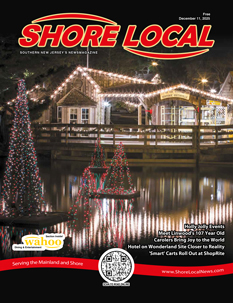By Douglas Keefe
of Beachcomber Coins
I had insomnia the other night, so in order to get to sleep, I started reading some government publications. However, I came upon one that described all the information contained on a $1 bill which thought may be of interest to my readers. The following is from that publication along with my embellishment.
The Bureau of Engraving and Printing in Washington D.C. is responsible for printing all United States currency including the $1 bill. The amount of currency to be printed is determined by the Federal Reserve Banks, of which there are 12 located around the country. Each is numbered; 1-Boston; 2-New York; 3-Philadelphia; 4-Cleveland; 5-Richmond; 6-Atlanta; 7-Chicago; 8-St. Louis; 9-Minneapolis; 10-Kansas City; 11=Dallas; and San Francisco. Because each Federal Reserve Bank determines its’ needs for currency, in some cases the needs are small in different areas, so the amount of bills printed can vary greatly from each area.
Now let’s get on with the information contained on each $1 bill (actually the information is the same regardless of the denomination of the bill). First, each note will contain the designation of which Federal Reserve Bank it originated from. The banks’ number will be printed in the upper and lower left and right-hand corners in the field on the front of the note. Additionally, the letter corresponding to the banks’ number, (1=A, 2=B; 3=C; etc.) is printed inside the black seal on the left side of the note which also has the name of the bank. Also note each serial number starts with the letter corresponding to the issuing bank.
The letter and number just to the left of the upper left number which is its’ Federal Reserve number is the plate position designation. One-dollar bills are printed in 32 note sheets, and this tells where on that sheet this note was located. The letter represents the row and the letter the column.
The letter and number located at the lower right of the bill and the plate serial number which each plate used to print a note has its’ own unique number. The first letter will always be the same as the letter in the plate position number. This is necessary to locate a plate which may have been damaged and be in need of replacement.
The series date located on the lower part of the note to the right of Washington is the year that particular design was first introduced. Unlike coins, this date does not change each year, rather only when there has been a design change. Each note has the printed signature of both the Treasurer of the United States and the Secretary of the Treasury. When new officials take office, instead of changing the date, a suffix letter is added, so the first change of officials after a new design was issued would have the letter “a”, the next a “b” and so on until there was a design change.
Serial numbers are printed on both the left and right side of the note and have a number in front that represents the Federal Reserve Banks’ letter and a number at the end, which goes up after the serial number reaches 99999999, then goes to 00000001. Sometimes notes are misprinted or damaged during printing and need to be replaced to keep the sequence of the bills intact. Replacing these notes with the identical serial number would be impractical, so a specially printed note with a star at the end of the serial number is used.
The Treasury seal is the green seal to the left of Washington, and bears the date 1789, the year of the department’s creation. Within the seal is a balance scale that represents justice; a key which represents an emblem of official authority; and the chevron with 13 stars for the original 13 states.
Across the top of the note are the words, “FEDERAL RESERVE NOTE,” which is the only type note we currently print. In the past we had other notes such as, “SILVER CERTIFICATE,” notes which were backed by silver, hence the label. Other notes such as, “UNITED STATES NOTE and GOLD CERTIFICATE,” were printed in the past.
I’ll do the reverse of the note next week.












